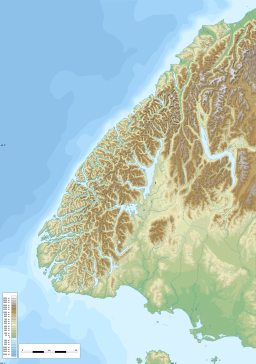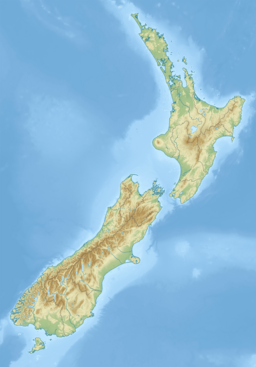Thompson Sound (Māori: Te Awa-o-Tū; officially Te Awa-o-Tū / Thompson Sound) is a fiord of the South Island of New Zealand. It is one of the fiords that form the coast of Fiordland.
| Te Awa-o-Tū / Thompson Sound | |
|---|---|
| Te Awa-o-Tū (Māori) | |
 | |
| Location | Fiordland |
| Coordinates | 45°15′0″S 167°00′00″E / 45.25000°S 167.00000°E |
| Part of | Tasman Sea |
| River sources | Pandora River, Namu River |
| Basin countries | New Zealand |
| Max. length | 21 km (13 mi) |
| Max. width | 1 km (0.62 mi) |
Geography
editThe fiord is connected at its farthest extent with Pendulo Reach,[1] part of Doubtful Sound / Patea, and between them Thompson and Doubtful Sounds form the non-Tasman Sea coast of Secretary Island. It is 21 kilometres in length. Kaikiekie / Bradshaw Sound, which extends east from the junction of Doubtful and Thompson Sounds, is geographically and geologically an extension of Thompson Sound. Several small rivers flow into Thompson Sound, among them the Pandora and Namu Rivers.[1]
History
editThompson Sound was given its European name by John Grono, a sealer who worked the Fiordland coast in the early 19th century, after his boat's owner, Andrew Thompson.[2][3] Grono himself is honoured in the name of the 1196-metre Mount Grono, the highest point on Secretary Island. Later surveyor Captain John Stokes incorrectly thought that the sound had been named after Colonial Secretary Edward Deas Thomson, and named an indentation in the sound's Secretary Island coast as Deas Cove.[2] In October 2019, the name of the fiord was officially altered to Te Awa-o-Tū / Thompson Sound.[4]
References
edit- ^ a b NZ Topographic Map: Thompson Sound
- ^ a b Foster, A. "Sounds Complicated", New Zealand Geographic, 37, January–March 1998. Retrieved 30 September 2017.
- ^ The fiords of Fiordland", Southern Discoveries, 15 August 2016. Retrieved 30 September 2017.
- ^ "NZGB notices – October 2019". Land Information New Zealand. 17 October 2019. Retrieved 15 December 2019.

